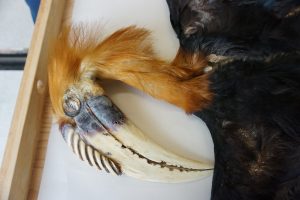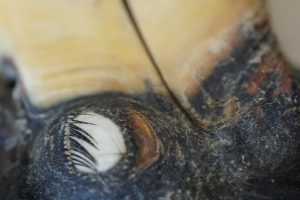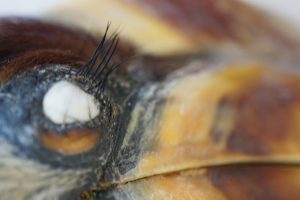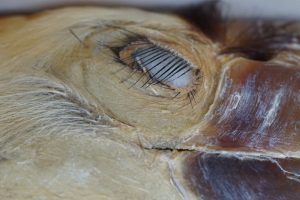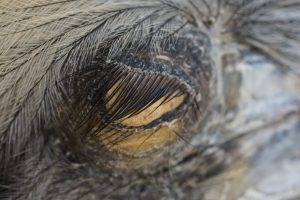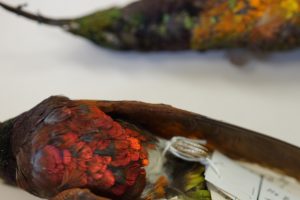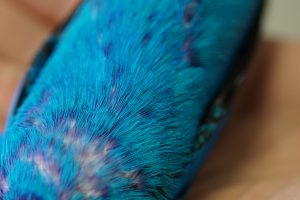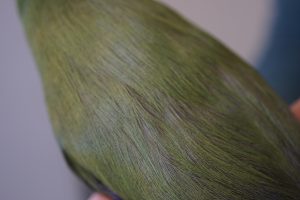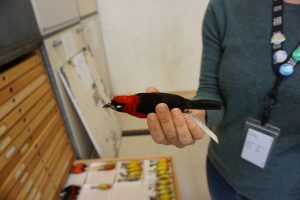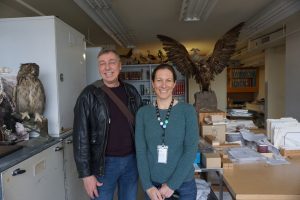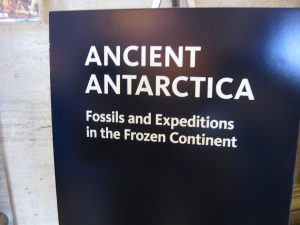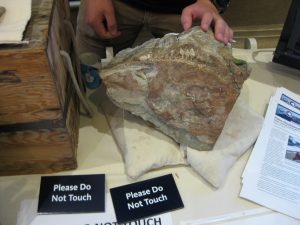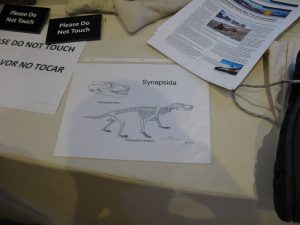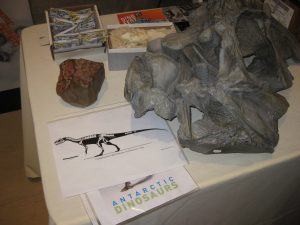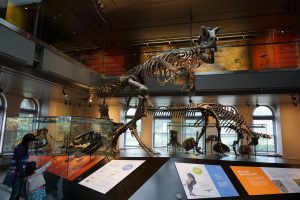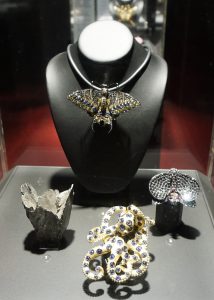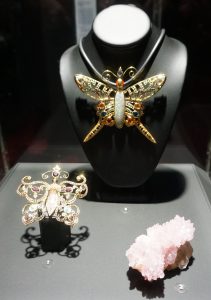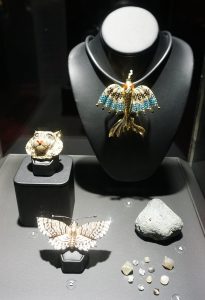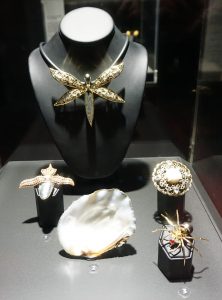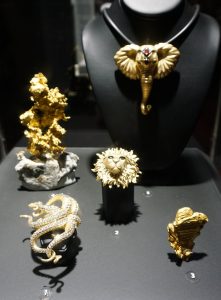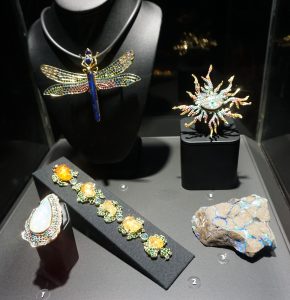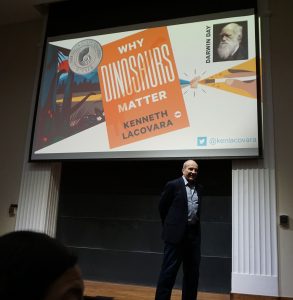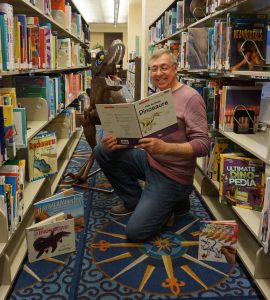A Special Trip to the Natural History Museum Los Angeles, provided an opportunity to learn more about Bird’s feathers, the latest Dinosaur discoveries and New Exhibits. Cristina Rosales Coordinator, Fellows Advancement arranged my visit. Check out the Museum’s website for a Membership Program that’s right for You! www.nhm.org
First Stop. Allison J. Shultz, PhD Assistant Curator, Ornithology Research & Collections provided a behind the scenes look at various birds stored in their vaults. Los Angeles is referred to as the “Birdiest” County in the United States due to its species diversity. Per my post January 25th “Teresa’s Head Frill”, I questioned whether or not Dinosaurs had eyelashes. My search revealed many birds have contoured feathers without barbs that resemble and perform the same function as eyelashes on mammals. Allison provided many examples of birds with these feather type of lashes.
We also discussed the colors in the feathers. Melanosomes provide the colors of the feathers. However, the type of barbs in the feathers can increase the intensity of the color. The consumption of carotenoids in seeds and fruit that birds eat determine the color of their feathers as with Cardinals & Gold Finches. A bird’s health can affect the absorption of the carotenoids and therefore the brightness of their color. In addition, some feathers are luminescent like humming birds. The angle of light reflecting from them can significantly changes their shade of iridescent colors of Bright Red, Green and Orange to Black. The Green-feathered Turaco actually evolved to make its own “Green” pigment.
Why all this color you might ask? Because Birds can see colors. They can even see ranges of color humans can’t. Many can see in the ultraviolet range. The color of a bird can indicate its health as well as making it more attract to a mate. Since dinosaurs are ancestors of birds it is believed they had the same abilities to perceive colors. This adds to the evidence that Dinosaurs were brightly colored vs. drab shades of green & grey.
Next Stop. A visit with Nathan D. Smith, PH.D. Associate Curator The Dinosaur Institute. The “Top Secret” Dinosaur presented at my April 2017 meeting is still “Top Secret”. It takes a great deal of time to remove the fossil from the rock, study, document and then publish your discovery. The Good News is there is a new species of Tyrannosaur that should be published by this summer. I will be able to write about the New Tyrannosaur then. In addition, a synapsid from Antarctica was being excavated from a rock in the lab during my visit. It takes a sharp eye to find these fossils. Nate notice what appeared to him as a row of small back bones. You and I could easily miss this perhaps 6-inch-long by ½ inch wide row of bone uncovered in the rock. Synapsids are the ancestors of mammals, so ours. This little guy You could easily hold in your hands. Again, until this discovery is published it must remain private. Looking forward to discussing these Antarctica finds in the future. Until then the below pictures are from the “Dino Fest” Weekend public display regarding the Antarctica Expedition.
After leaving the lab, I was on my own to visit the Dinosaur Hall, Gems exhibit “Art of the Jewel the Crevoshay Collection and the 3D movies. It seems I always notice some new detail when visiting the Dinosaur Hall. Their scale to each other, an aspect of their bone structure or just something about their pose that suggests how they moved so many millions of years ago. The Gem exhibit was very interesting. More than 50 pendants, bracelets and brooches are on display from the Crevoshay Collection which take the forms of plants and animals. From spiders to butterflies and birds to octopi, there is something for everyone to enjoy. Many pieces of jewelry seemed too large to wear, but definitely beautiful to see up close. Unfortunately, I was a little late to see the “Oceans Our Blue Planet” movie and the “Incredible Predators” was in progress. What I saw of the predators made me want to return soon to see both movies in their entirety.
A lecture “Why Dinosaurs Matter” was held at USC campus across the street from the Museum that evening. The speaker Kenneth Lacovara, author of the book with same title was very entertaining. Dinosaurs reined for almost 200 million years. If not for the asteroid hitting the earth 65 million years ago, we would not be here. Twenty million years after the dinosaur’s demise, small mammals begin to come out during the daylight. With the large dinosaur carnivores gone these little mammals were safe to roam and evolve to dominate the earth. The study of Dinosaurs and their changing climate is very important for us with today’s changing climate. When the Dinosaurs roamed, Antarctica was a Tropical Forest! Check out his book for more interesting information.
“Encouraging the Appreciation of Art and Education through the Inspiration of Dinosaurs”
Join Max the T-Rex and I at the City of Camarillo Library for a Reading
of Dinosaur Fun Facts & Fiction Followed by
a “How to Draw Dinosaurs” Activity
on March 12th at 7:00 PM
4101 Los Posas Road, Camarillo
Paul & Prehistoric Pals
Your feedback is appreciated, Thank you!
